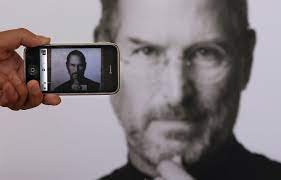Under Tim Cook’s leadership, Apple became the first public US business to reach a trillion-dollar market cap – but it came at a cost. The past decade has seen a significant change at Apple in the absence of Steve Jobs, who left behind a legacy of innovation.
During this transition, some changes were made to Steve’s original directions and plans, such as the Apple Watch. However, some decisions taken by Apple were completely contrary to what Steve intended, such as the Apple Pencil.
Today, we’ll examine seven such changes and see how they contributed to the company’s exponential growth.
1. Apple introduced bigger iPhones
In 2012, Apple introduced a larger 4-inch display with the faster and thinner iPhone 5, a step up from the 3.5-inch screen size iPhone users were accustomed to. The larger display made room for an extra row of apps, and it was the first time the iPhone got a larger display, but it was still smaller than Android phones at the time.
Steve Jobs would not be a fan of this. He disliked the advent of bigger phones and even said, “Nobody’s going to buy it [a bigger iPhone].” However, Apple decided to go in another direction, which was the right call. Larger iPhones such as the Plus and Pro Max versions made it easier for users to use the phone without straining their eyes.
This is one of the few instances where Steve Jobs was wrong. A compact iPhone was a great idea back then, but it didn’t allow for a comfortable typing and viewing experience.
2. The Rise of Apple Silicon
In 2020, Apple ousted Intel and announced a transition to its own in-house ARM-based chips, known as Apple Silicon. This change was in line with Steve Jobs’ philosophy of creating a “whole widget” (i.e., a complete package) for users.
These chips, which include the M1 and M2 chips, can be found in newer iMacs, MacBooks, and even iPads, and are similar to the A-series chips on the iPhone. This change gave Apple tighter control over both hardware and software, thus allowing better customization for users.
Apple Silicon chips combine the CPU, GPU, and RAM into a single unit. As a result, they are a significant upgrade over Intel processors, fostering excellent multi-core performance while reducing battery consumption.
3. AirPods changed wireless headphones forever
Another development was releasing the AirPods in line with Steve Jobs’ directives. Earlier, in 2007, Steve Jobs introduced the Apple iPhone Bluetooth headset but later discontinued it due to poor sales record.
But, in 2016, Apple made a second attempt and unveiled the AirPods alongside the iPhone 7. This was because Apple removed the headphone jack from the iPhone, and a wireless headset was again required.
The AirPods paired seamlessly with the iPhone and sounded great for mainstream users. Soon, everyone wanted a piece of the pie, and wireless earphones were the new cool.
It all worked out incredibly well in Apple’s favor. While other brands caught up in terms of audio quality and features, it was too late. Apple now dominates the headphone market in the US, according to Statista.
4. Launch of Apple Watch
The Apple Watch, released shortly after Steve’s death, was initially met with skepticism due to short battery life and performance issues. The value for money wasn’t great for most users. Eight generations later, the smartwatch has changed the world of fitness and is now the leading product in the smartwatch industry.
Currently, the most notable features of the Apple Watch include workout tracking, ECG, heart-rate monitoring, crash detection, and fall detection. It also contributes to female health by evaluating body temperature and blood oxygen levels to predict ovulation.
The Apple Watch, like Apple silicon chips and AirPods, was also a product of the genius of Steve Jobs, who always wanted a wearable device like the iPhone.
5. Apple Adopts Stylus With Apple Pencil
Steve Jobs was known to oppose the use of the stylus. However, the Apple Pencil has stuck around and proven to be an innovative note-taking, sketching, and design tool. When paired with the Apple Pencil, you can transform your iPad from a media consumption device to a powerful work machine.
Released in 2015, the Apple Pencil revolutionized the stylus market with its unique design that fits naturally in your hand like a pencil. Unlike the capacitive rubber stylus, the Apple Pencil relies on a network of transmitters to detect pressure and position. As a result, the Apple Pencil feels natural, accurate, and comfortable.
While Steve Jobs may have heavily opposed the idea, the Apple Pencil combined with the iPad is now the go-to tablet for digital artists and designers.
